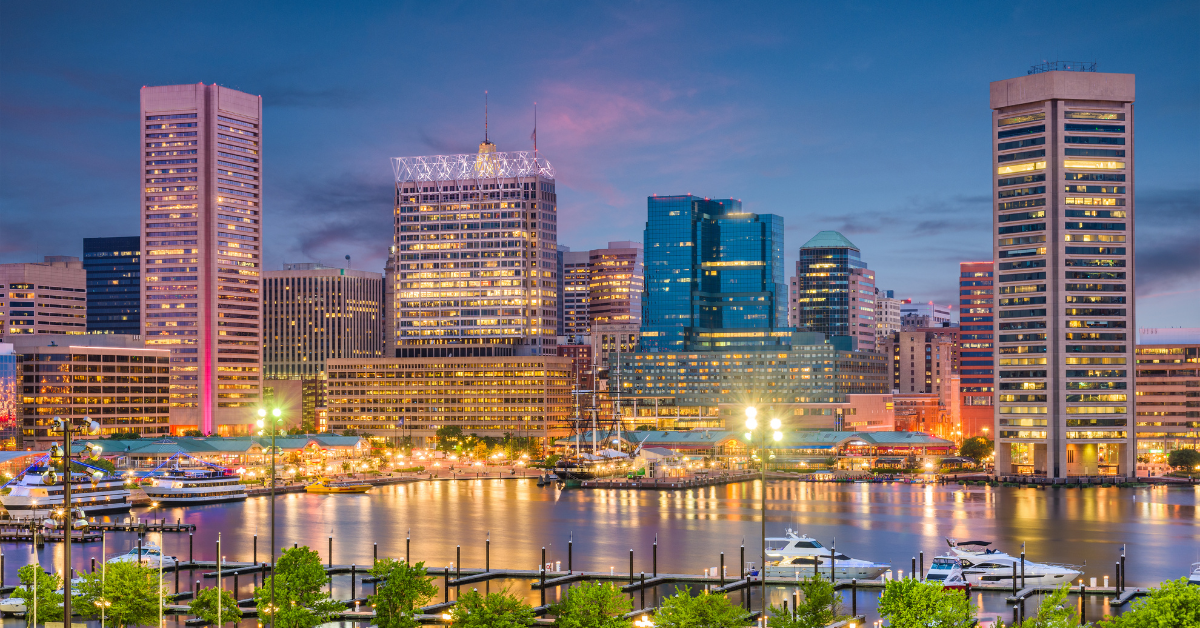Maryland is a state rich in history and culture on the U.S. East Coast. In Japanese, it is generally written as “メリーランド州” in katakana, and no official kanji notation exists. This article explores the background of its notation and the unique impressions Japanese people hold about it.
Maryland’s Notation and the Use of Kanji
Maryland is written in Japanese by transcribing the English Maryland into katakana as “メリーランド,” and then adding the kanji “州” (state) to form “メリーランド州.” There is no official kanji equivalent, and katakana is used in line with Japanese rules for foreign place names.
In Chinese, Maryland is sometimes written as “馬里蘭州,” but this has not been adopted in Japanese. This stems from the Japanese convention of emphasizing sound over meaning when transcribing foreign place names.
| Language | Example | Feature |
|---|---|---|
| Japanese | メリーランド州 | Combination of katakana and the kanji “州” |
| Chinese | 馬里蘭州 | Uses phonetic kanji |
| English | Maryland | Official spelling |
The Image Japanese People Have of Maryland
Connection with Washington, D.C.
Maryland is often seen as a state that supports the capital region. Many federal employees and diplomats live there, giving Japanese people the impression of Maryland as “a state close to politics.”
Historical and Cultural Background
Baltimore is famous as the birthplace of the U.S. national anthem, making it a symbolic site for Japanese who study American history. Tourists also visit for its historical significance.
Academic and Research Hub
The University of Maryland is the centerpiece of education in the state, and many Japanese researchers and students have studied there. This has strengthened Maryland’s image as “a place of learning.”
Nature and Food Culture
Another attraction of Maryland is its natural environment and food culture. The Chesapeake Bay provides rich fishing grounds, and fresh seafood is a major draw. Dishes featuring blue crab are considered a symbol of the state.
| Feature | Content | Japanese Impression |
|---|---|---|
| Nature | Chesapeake Bay, lush landscapes | Rich in sea and nature |
| Specialty | Blue crab, crab dishes | Popular among food lovers |
| Tourism | Bay cruises, port towns | Favored by travelers |
For many Japanese, these aspects create the image of Maryland as “a state where one can enjoy both nature and food.”
Maryland and the Appeal of Sports
Sports are another way Japanese people become familiar with Maryland. Professional sports teams, in particular, shape its image abroad.
Baseball
The Baltimore Orioles are famous in Japan, especially because Cal Ripken Jr. set his record for consecutive games played while with the team.
American Football
The NFL’s Baltimore Ravens are known for their strong defense and passionate fan base, which also attracts Japanese football enthusiasts.
College Sports
The University of Maryland’s athletic programs are notable, especially its basketball team, which is respected nationwide and followed by Japanese students and sports fans.
| Sport | Team/Institution | Feature |
|---|---|---|
| Baseball | Baltimore Orioles | Produced legendary players |
| Football | Baltimore Ravens | Known for powerful defense |
| College sports | University of Maryland | Basketball is especially popular |
The Multifaceted Impression Among Japanese People
Maryland is not only geographically close to the capital but also has diverse attractions in food, academics, and sports. The following table summarizes the impressions Japanese people hold:
| Field | Japanese Impression | Reason |
|---|---|---|
| Politics | A state supporting Washington, D.C. | Proximity to the capital |
| History | Birthplace of the national anthem | Events in Baltimore |
| Academia | Hub of scholarship | University of Maryland |
| Nature | Scenic bay area | Chesapeake Bay |
| Food culture | Seafood-rich state | Famous crab dishes |
| Sports | Home of major teams | Baseball and football thrive |
Why Kanji Did Not Become Standard
Japanese usually represents foreign place names in katakana. Using kanji could cause misunderstandings due to added meanings. Just as “New York” and “Chicago” are rendered in katakana, so too is Maryland.
Thus, “メリーランド州” remains the natural and standard form in Japanese. The absence of kanji representation reflects the linguistic culture of Japanese.
Conclusion
In Japanese, Maryland is generally written in katakana as “メリーランド州,” and no official kanji transcription exists. The impressions Japanese people hold are diverse: a state adjacent to the political center, a place with historical significance, a hub for academics and sports, and a land rich in seafood.
In sports, the Baltimore Orioles and Ravens stand out as symbolic teams, making Maryland familiar even to Japanese fans. Combining history, culture, nature, cuisine, and sports, Maryland emerges as a state with layered appeal that is likely to gain greater recognition in Japan in the future.






